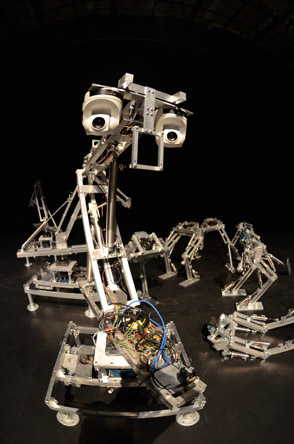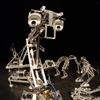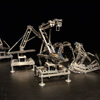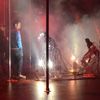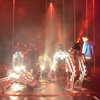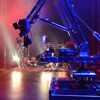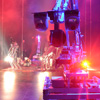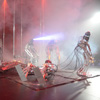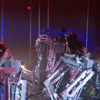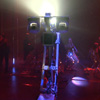DSM-VI is a logical following to our artistic approach of creating artificial worlds and entirely robotic systems. This time, we want to create a universe that stages creatures expressing symptoms of "abnormal" psychological behaviors and stuck with some serious "mental health" problems, such as neurosis, psychosis, personality disorders, paranoia, schizophrenia, depression, delirium, and other forms of behavior and mental disorders. The project title is inspired by the famous reference manual published by the American Psychiatric Association, the DSM-IV.
The DSM-IV (Diagnostic and Statistical Manual of Mental Disorders) is considered to be the bible of modern psychiatry. Sometimes glorified sometimes highly criticized, it is a depictive work that describes and classifies human behavior disorders and mental diseases. Version IV of the DSM has been published in 1994 and then revised in 2000. Version V is actually in preparation and should eventually be published in 2012. With this project, we are proposing version VI. Like some of our previous works that were conceived around the idea of "the misery of the machines" (see La cour des miracles), the DSM-VI project wants to pursue our creative work on the metaphor of the living by now investigating the notion of a "psychosis of the machines".
The installation is presented as a "tableau vivant", a vast and complicated labyrinthic space that reminds of the cages of a zoological garden or the corridors of a lunatic asylum. In this strange universe made of metal scaffoldings, electrical cables and suspended ducts, vague and evasive shapes can be seen through the haze. Mysterious creatures inhabit this place, sometimes totally uninterested when the viewers walk by, sometimes completely gone wild and crazy because of this intrusion in their intimacy.
The robotic creatures are the characters and actors of this singular interactive allegory. They are built in order to evoke dysfunctional or absurd behaviors that make believe in the disease that they internally bear. These machines are abstract structures made of aluminum, plastic and silicone, with no deliberate intent of visually representing anything. Above all, they are machines and it is mainly their behaviors that give them an organic and living aspect. In this strange universe of responsive but awkward robots, we encounter schizophrenic machines, machines with multiple personalities, autistic machines, delirious, phobic and paranoid machines.
